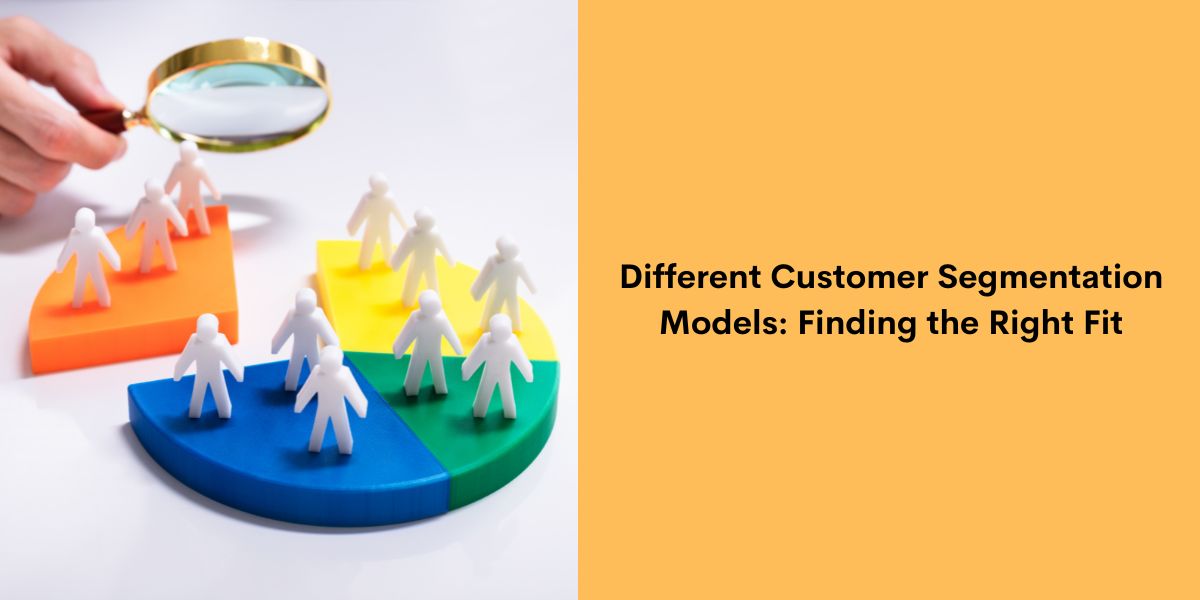In the digital marketing era today, it is imperative to ensure that the right message gets to the right audience. Today, no place for mass advertising sends a message to everyone and expects that some will be interested. Today’s consumers are more demanding and expect brands to cater to their needs and wants. This problem can be solved through Segmentation. Customer segmentation is a process of dividing the customers into different groups based on certain characteristics that they share.
Ready to Elevate your Marketing Strategy?
These can be demographic such as age, gender and income, behavioral such as buying patterns and website activity, psychographic such as values, interests and lifestyles or even a combination of these. When you segment your customers, you are able to send your adverts to each group in a way that will make them respond positively and increase the conversion rate and the ROI of the adverts that you are paying for. This article is a comprehensive guide to understanding customer segmentation and why it is the revolution in paid advertising.
Summary
In this article, you will learn about the different segmentation models
- How to use segmentation, and how to create paid advertisements that will be attractive to each segment of the customers.
- Understand the different types of customer segmentation models and how to determine the right ones for your business.
- Use the customer information for categorizing customers for the purpose of advertising and marketing.
- Prepare an engaging message and visuals that will be targeted at each customer segment. Design different pages that are specific to the segment to ensure that the segment’s needs and preferences are well catered for.
- Assess the effectiveness of the campaign and its impact and modify segmentation and targeting strategies for enhanced performance in the future.
Different Customer Segmentation Models: Finding the Right Fit

Choosing the right model is the first step towards undertaking an effective customer segmentation. Here’s an overview of the most common segmentation models.
Demographic Segmentation
This model categorizes the customers using their raw data such as age, gender, income and education, and geographical locations. However, demographic information is rather easy to obtain but it is also mostly generic. It is much more useful when used in conjunction with other segmentation models to help you paint a more granular picture of your audience.
Behavioral Segmentation
This model categorizes the customers based on their previous behaviour and their engagement with the brand. These include purchase history, website activity, app activity and email interaction. Behavioral segmentation enables you to focus on customers who have already shown interest in your products or services, which helps create more relevant ads.
Psychographic Segmentation
This model segments customers according to their values, interests, life styles and personalities. Although psychographic data is more difficult to obtain than demographic data, it provides insights into consumer behavior and choices. Knowing your customers’ psychographics helps you create ads that speak directly to the emotions and form a better bond with the brand.
Needs-Based Segmentation
This model segments customers according to their needs and problems. This means that you have to conduct a comprehensive customer analysis to determine the problems your target market is experiencing and how your products or services can solve them. This type of segmentation helps you to address certain customer needs and position your products as the solutions to their problems, thus creating very effective ads.
Value-Based Segmentation
This model classifies customers according to the contribution they make to your business. This could be based on factors such as lifetime value (LTV), frequency of purchase, or brand affinity. Value-based segmentation helps you focus your marketing efforts on the most profitable customers and encourage them to remain loyal to your company.
When selecting customer segmentation models, think about your objectives, your audience, and what data you have at hand. Sometimes, the best solution is to combine all these models to get a bigger picture of who your customers are.
Leveraging Customer Data for Effective Segmentation
Customer data is the lifeblood of customer segmentation. Here are different sources of customer data you can leverage:Here are different sources of customer data you can leverage:
- Customer Relationship Management (CRM) Systems: CRM systems contain important customer information including their buying habits, contact details, and interaction records.
- Website Analytics: Tools such as Google Analytics give details on user engagement on the website such as page views, time spent on the website and click through rates.
- Social Media Analytics: Social media platforms provide analytical data about the target audience’s age, gender, preferences, and interactions with the content.
- Email Marketing Data: Email marketing platforms capture the number of opens and clicks of the emails as well as the actions that are taken as a result of the emails.
- Surveys and Customer Feedback: Collect the data from the customers through surveys and feedback forms to know their expectations, requirements, and issues.
It is possible to gather a lot of information about customers from different sources and use it to build a detailed customer portrait for segmentation. To segment your customers into different clusters based on their characteristics, use data analytics tools to analyze your customer data and look for patterns and trends. Please bear in mind that data protection laws are a significant factor to consider. It is crucial that you follow all the required rules and regulations when it comes to the collection and use of customer information for segmentation.
Crafting Targeted Paid Advertising Campaigns: Speaking to Each Segment

Now that you have identified your customer segments, it is time to design paid advertising campaigns that will speak to each segment. Here’s how:
- Develop Compelling Ad Copy: Whenever you are coming up with ad copy ensure that it fills the gap in terms of the need, want and the struggle which a segment has. Use language and communication appropriate concerning the particular characteristics of the target customers.
- Utilize Relevant Creatives: Select the images to be used as banners and videos in a manner that they may be of interest and suitability in the various regions. When choosing images, consider the choice of demographics, psychographics, and lifestyle.
- Highlight the Value Proposition: Explain how your product or service is different and what value it aims at targeting each segment? In their case, what particular advantages do the three types of strategies offer to meet their requirements and overcome their challenges?
- Target the Right Platforms: Choose the advertising platforms where your target audience spends their time on the internet. For instance, Facebook and Instagram have many targeting features that include demographics, interests, and behaviors. Employ paid search marketing (PSM) tools like Google Adwords to target users searching for the keywords relevant to your product or service.
Pro Tip: Use dynamic product ads to automatically customize the ad creatives based on the user data and their behavior. This makes it possible for every user to be exposed to products that are of interest to them.
Related – Strategies for Enhancing ROI in Paid Advertising
Building Targeted Landing Pages: A Seamless User Journey
Landing pages are those websites users visit after clicking your advertised links. Here’s how to create targeted landing pages that convert:
- Align with Ad Message: Make sure the message present on the landing page should be in harmony with what you convey in the advertisement. Ensure coherency of the supplied brand messages and their positioning in a user’s set of experiences.
- Focus on Benefits: Consider what value you are going to deliver to the particular customer group you want to appeal to on the landing page and focus on it. There is always a need to fill their concerns with yours and demonstrate to the viewers how your proposition eradicates whatever issues they may have.
- Clear Call to Action (CTA): Always, make sure that the landing page includes fabulous, explicit, and persuasive call to action that will compel the visitors to take an action such as buying something, signing up for the product trial version, or downloading a white paper.
- Mobile-Friendly Design: Focus on your landing page: since many users will visit these pages via mobile apps or through their portable gadgets, make sure that the pages are mobile-friendly.
Pro Tip: A/B test landing page elements to see which of the variants perform better with various pages and attract more converts from the customer segments.
Bidding Strategies for Segment-Specific Optimization
A bidding strategy defines how much money is available for spent per every click and is applied in a context of paid advertisements campaigns. Here’s how to optimize bidding strategies for each customer segment:
- High-Value Segments: However, for highly valuable customer segments, customer lifetime value, it is advisable to employ extremely competitive bidding strategies that include, for instance, target CPA or aiming for as many conversions as possible to allow reaching and acquiring these exclusive clientele.
- Low-Value Segments: Where segments are of lower lifetime value apply safer bidding tactics such as aiming at acquiring the maximum click-through rate (CTR) or targeting a specific return on ad spend (ROAS) so that you obtain a positive ROI on your advertising dollar.
In essence, if you manage to create a separate bidding approach regarding each of the segments of your customers, then you are guaranteed to get the most out of your paid advertising platforms and ensure that you get the most desirable value for your money.
Track and Analyze Performance: The Art of Continuous Improvement

The journey doesn’t end after launching your targeted paid advertising campaigns. Continuously monitor and analyze their performance to identify areas for improvement. Here’s what to track:
- Campaign Performance Metrics: Track key metrics like impressions, clicks, cost-per-click (CPC), conversions, and conversion rates for each customer segment.
- Landing Page Performance: Analyze metrics like bounce rate, time spent on page, and form submissions on your landing pages. Identify areas for improvement within the user journey.
- Engagement Metrics: Pay attention to engagement metrics like shares, comments, and likes on your social media ads. This is to gauge audience reception within each segment.
By consistently monitoring and analyzing campaign data, you can identify which messaging, creatives, and landing pages resonate best with each customer segment. Utilize these insights to refine your targeting strategies, optimize your ad creatives, and improve the overall effectiveness of your paid advertising efforts over time.
FAQs
How many customer segments should I create?
It is recommended to establish a limited initial number of segments (between 3-5), expanding and optimizing them with time based on customer information.
What if I don’t have a lot of customer data?
If you have a small amount of it, there are still primary segmentation models that you can utilize. Some are demographic or behavioral segmentation. You can use website and social media data, and then divide customers based on how they interact with the site and what they are interested in.
How can I ensure my segmentation is accurate?
Incorporate numerical data such as website activity, customer relationship management data. Make sure you’re conducting frequent segmentation checks as you collect more information and tweak segmentation as needed.
How much time and effort does customer segmentation require?
Customer segmentation is a process that should be constantly conducted. Nevertheless, it does require a lot of time and effort to be made at the beginning. But the advantages in the long term are invaluable.
How can I convince my team of the value of customer segmentation?
Emphasize on the value proposition that customer segmentation can offer in terms of ROI. Show how following the segmentation results in increased conversion rate, decreased cost per customer acquisition and, thus, increased revenue.
What tools can help me with customer segmentation?
Most of the marketing automation solutions and CRM tools enable easy sorting of the clients according to certain parameters.
How can I measure the success of my customer segmentation strategy?
Check how many clicks and conversions each targeted message generates. Also see how the conversion rate differs between the two groups.
Conclusion
Recap
You now have the skills and tools to make the most of customer segmentation and your paid ads. Its important not to forget the fundamental tenet of marketing communications. Target your audience, know what they want, ensure that they get it from you. Provide them with a user experience that pushes them to act. Use practical application of big data analytics and adaptation of your segmentation approach. Paid advertising is a sure way of giving your customers the most desired push and record high performances.
Final Thoughts
Hence, paid advertising is gradually moving towards the model of personal and relevance. With the help of a qualitative database division, develop campaigns more important to the selected circles of customers. You can establish closer contact with the target audience. This leads to increase its trust, and contribute to the company’s stable organic growth. However, to reiterate, customer segmentation is an evolutionary process. Collect more data and more knowledge about the audience acquired. One can always update the strategy and adjust the paid advertising campaigns accordingly to be maximally effective.
Call to Action
With the knowledge and tools laid down above on Customer Segmentation, it is time for you to get into action.
- Define Your Goals: It is necessary to clearly state the goals for your paid advertising campaigns. Do you want to achieve brand recall, collect leads, generate site traffic, or boost sales? Segmentation should have detailed objectives that are quantifiable to guide the overall strategy.
- Identify Your Data Sources: Identify the type of customer data you currently have and where they originate from. This may include CRM, Website Traffic and Social Media.
- Segment Your Customer Base: Select suitable customer segmentation models. Use tools for data analysis to sort your audience into groups based on their similarities.
- Craft Targeted Campaigns: Design attractive headlines, graphics, and landing pages to fit the target market and meet the customer’s needs.
- Implement & Analyze: Start running the paid advertising campaigns to the intended customers. Closely monitor the result by each customer segment. Track things like impressions, clicks, conversions, engagement and measure how effectively your segment and message is working.
- Refine & Optimize: This information should be used to update the segmentation more frequently. Test differing ad creatives, landing pages and bidding strategies for paid advertising for each segment of customer.
Through these points and with the help of customer segmentation, your paid advertising campaigns will evolve. You get highly effective initiatives with high conversion rates that will take you and your business forward to success. But, always bear in mind that the successful achievement of segmentation mastery is not a one day affair.




